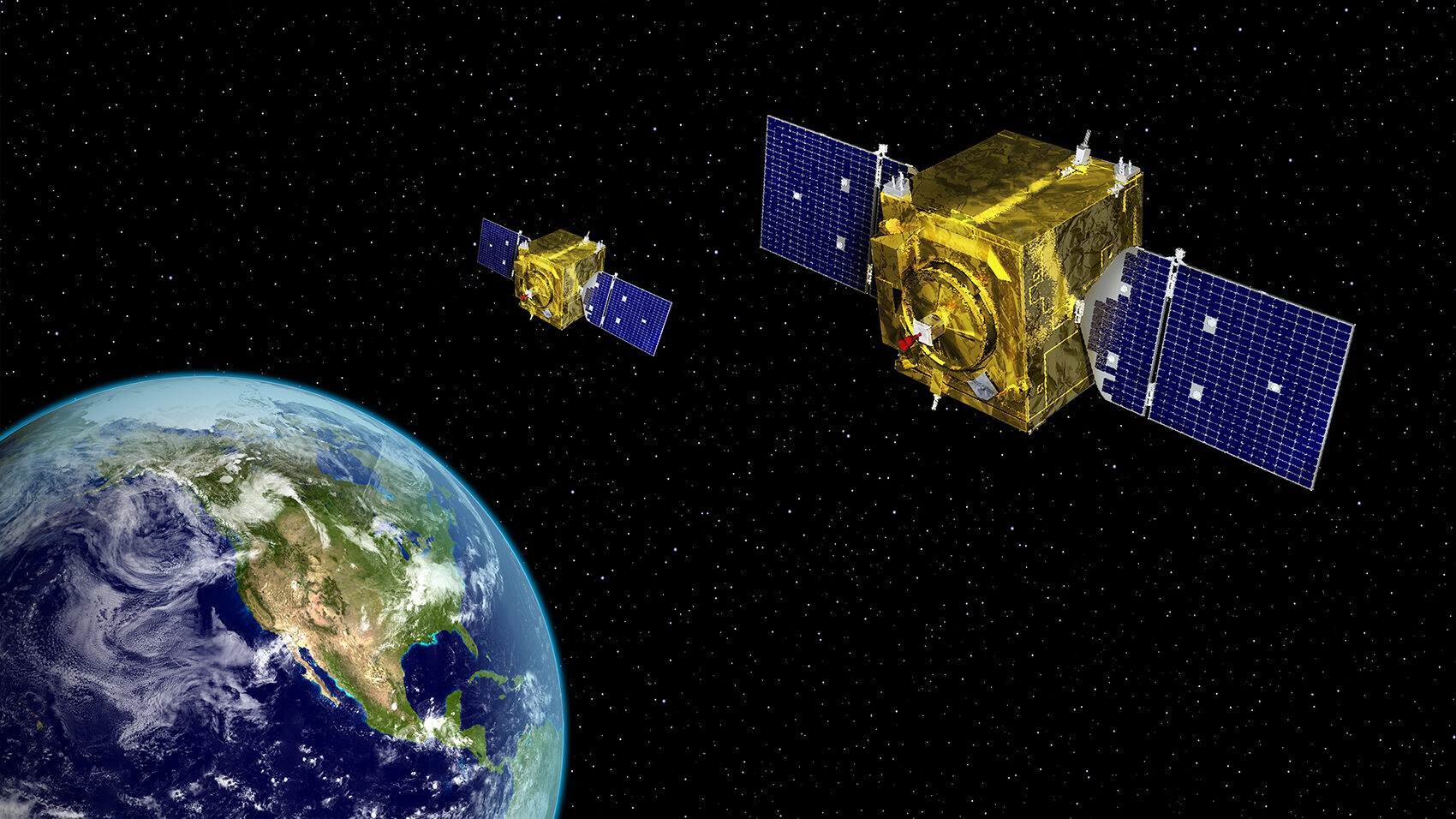
GSSAP space domain awareness satellite Credit: AFSPC
WASHINGTON: While Space Force has chosen Tucson-based GEOST to build a first prototype, the service envisions future competitions for stand-alone sensors that could be carried on military, commercial or potentially even foreign satellites to monitor Geosynchronous Orbit (GEO), according to a senior official.
Jack Barnett, chief of Space Systems Command’s Space-Based Space Domain Awareness (SDA) Branch (SSC/ECZGZ), told Breaking Defense in an email that the plan is to eventually develop a “diverse offering of SDA capabilities.”
In particular, the Space Force is looking for cheap, light-weight electro-optical cameras to keep tabs on spacecraft in the high-value GEO belt (some 36,000 kilometers in altitude) that could fly as so-called hosted payloads on any number of satellites. GEO is where most communications satellites, military and commercial, currently operate.
Space Force already has at least four “neighborhood watch” birds in GEO, known as the Geosynchronous Space Situational Awareness Program (GSAPP) constellation first launched in 2014. GSSAP sats carry a sophisticated optical camera and have undertaken missions such as shadowing experiments by China’s own maneuvering SJ-20 sat. GSSAP’s budget and capabilities are classified, but suffice to say they are unlikely to be cheap.
Somewhat confusingly, Space Force has been pursuing the hosted-payload capability for GEO under two separate solicitations to industry: a Broad Agency Announcement (BAA) call for data issued in April 2020 and a more recent Request for Information (RFI) issued in October 2021.
The prototype contract awarded to low profile (and somewhat spooky, with much of its work in the black world) GEOST last month — with a total value of nearly $39 million in two tranches — came under the BAA. The BAA was seeking to “identify, develop, and demonstrate concepts for low-cost, low size, weight, and power (SWaP-C) hosted space-based sensors” to improve SDA in GEO.
Josh Hartman, GEOST vice president and general manager, told Breaking Defense that one of the most significant things about the effort is that Space Force wants sensor payloads that cost less than $10 million to produce.
“It’s a small package and low cost. And so not only does it fit on multiple hosts, but we’re considerably under $10 million, which means it makes it easier to proliferate around an orbit in order to capture greater space domain awareness,” he said.
The electro-optical camera in the sensor package being develop by GEOST has its foundation in a system first developed by MIT/Lincoln Laboratories, originally designed as a hosted payload for Japan’s Quasi-Zenith Satellite System (QZSS).
That payload design, however is optimized for use in Low Earth Orbit rather than GEO. One goal of the BAA was specifically to enable “technology transfer aspects of the QZSS hosted payload from the laboratory to commercial vendors to enable a production line of GEO SDA Hosted Payloads.”
Once the payload prototype is competed, there’s still the question of getting it into orbit. Barnett explained that Space Force “working to finalize our launch host” for the GEOST payload, and “will make that information available at a later date.” However, he said, the service already has ruled out a foreign satellite for the prototype “due to costs and complexity.” He added that the goal is to launch the prototype sometime in fiscal 2023.
Hartman said that GEOST would deliver the payload ready for launch by the end of 2023, noting that it will take some time for Space Force and the host satellite manufacturer to integrate the camera system. Thus, launch probably will not take place until sometime in calendar 2024.
Barnett explained that only one prototype contract was issued under the BAA, “based on available funding.” However, he said, under the October RFI, Space Force will eventually be looking to bring more vendors and more payload options for GEO under development.
“We continue to work with the defense industry for future competitions of this nature and to gather feedback on what are the right requirements for affordable space based SDA capacity,” he said. “We will continue to welcome additional responses to the RFI between now and its expiration date in late 2022.”
The RFI noted that the service was looking for three or four payload options for so-called “untasked” sensors, meaning that the camera would automatically scan its field of view. Those payloads, too, are to cost less than $10 million to develop.
Barnett said that data gathered can be used on its own or to tip and cue other SDA assets (think GSSAP, which can get up close and personal with a target).
“Metric observations of high quality have many uses, one of which is the prediction of all space objects orbits and conjunctions with other space objects. This capability can help other systems perform their missions,” he said.
HASC chair backs Air Force plan on space Guard units (Exclusive)
House Armed Services Chairman Mike Rogers tells Breaking Defense that Guard advocates should not “waste their time” lobbying against the move.



























